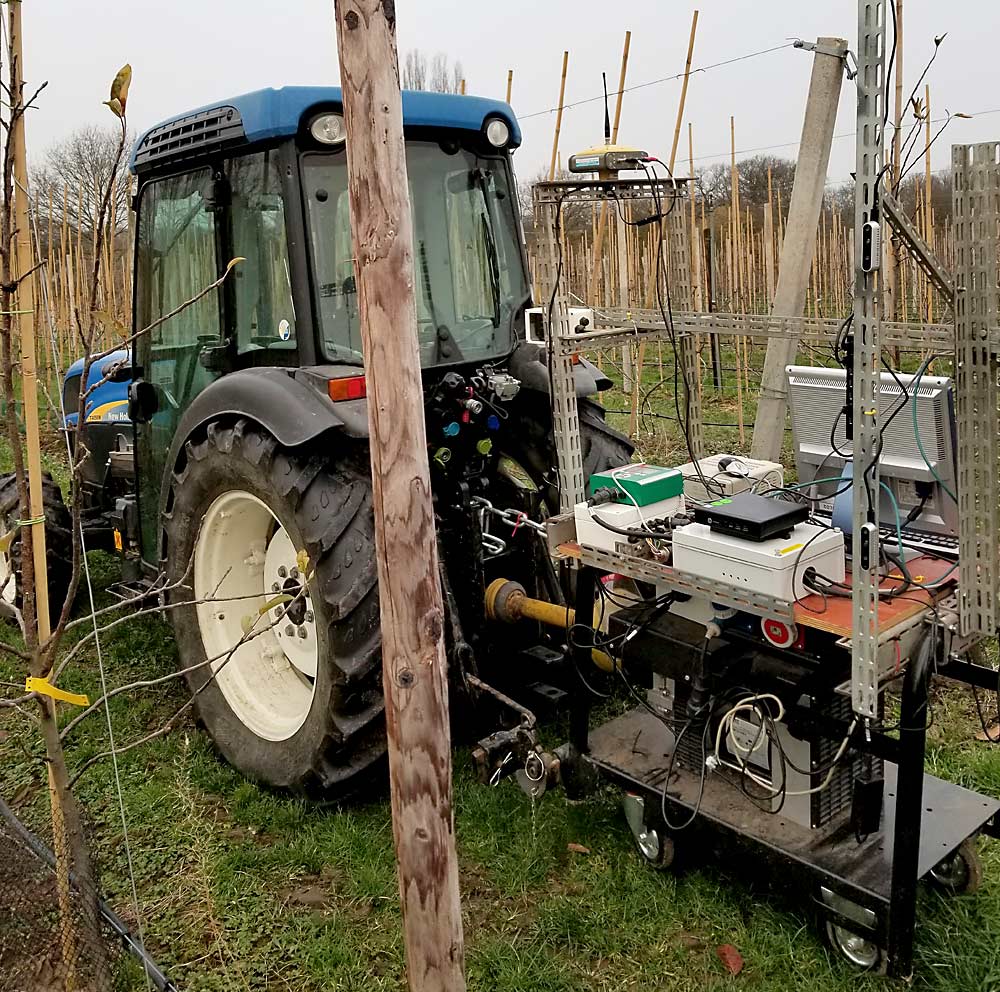
The dream of automated tractors nears reality, with add-on technology such as this equipment that can turn a regular tractor into a robot, as Washington growers and industry leaders saw on a recent trip to the Netherlands. A new approach to the technology roadmap aims to outline the need for such innovations to guide entrepreneurs and growers into the future of orchard management. (Courtesy Washington State University)
From weeding robots to pesticide-applying drones, innovative engineers around the world have lots of visions for new farm technologies, but they don’t always understand the specific needs of specialty crop growers.
Washington State University tree fruit specialist Karen Lewis says she gets calls regularly from tech entrepreneurs who want to work with the industry, but she wants to help them do their homework about the industry before pitching their products. That’s why the industry needs to invest in updating the Washington Tree Fruit Research Commission’s technology roadmap, she said in a presentation about the project in March.
“We need a single document that illustrates industry characteristics and that details the crop cycle and associated tasks,” she said. “If we had such a document, then we could at least have a shared starting point when discussing challenges and opportunities that are specific to this industry.”
First developed in the early 2000s, the Technology Roadmap for Tree Fruit Production laid out a vision for innovations that would lower the costs of production and improve development and adoption of new technologies. It spurred many advances, but the nearly two decades since have heralded significant changes in production systems that highlight new needs and ongoing challenges.
Now, a new roadmap — focused on the Pacific Northwest — will help the industry move forward by spelling out to entrepreneurs and researchers what growers need and guide the commission’s funding decisions, said Rob Curtiss, special projects coordinator for the commission.
“Our goal is to look toward the future to anticipate technologies that are coming up and technologies that are not in place yet,” Curtiss said. “We also want to guide orchard owners and managers as to what they should expect for a technological future.”
A small group of industry leaders in technology met to create the map’s outline that includes each phase of work, from orchard establishment through harvest, and every task in each time period that could have automation or mechanization applied to it, Curtiss said. Then, it will outline the current state of technology and set goals for different time frames: one to three years into the future, three to five years, five to 10 years, and 10 to 20 years out.
“One of the biggest challenges is looking out at that far time, 10 to 20 years from now, because just the nature of agriculture is that we are focusing on problems we’re facing right now,” Curtiss said. “Technology moves not in a straight line, so we’re trying to focus on core technologies a lot of other things can build on.”
For example, an automated tractor opens the door to automated mowing, spraying, scanning and so forth.
Curtiss, Lewis, and WTFRC Manager Mike Willett are working together to compile the results of the workshop into a cohesive draft, which the advisers will then review. Then, the roadmap will go to a larger advisory group for a second review before it’s ultimately shared with everyone in the industry who wants to provide feedback.
Curtiss anticipates it will be ready for wider audiences later this year.
The goal is for the roadmap to serve as a communication tool, to help the industry communicate its needs to technology developers whose interest in the tree fruit sector has grown significantly since the first roadmap was drawn nearly 20 years ago.
“The good news is that ag tech firms are coming to us now because they have tools to develop and sell,” Lewis said. “We have more predictable and more repeatable orchard systems with uniform canopies they can finally work with.” •
—by Kate Prengaman






Leave A Comment